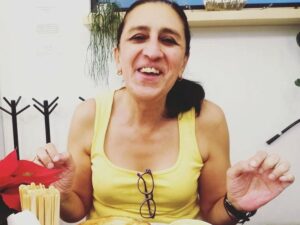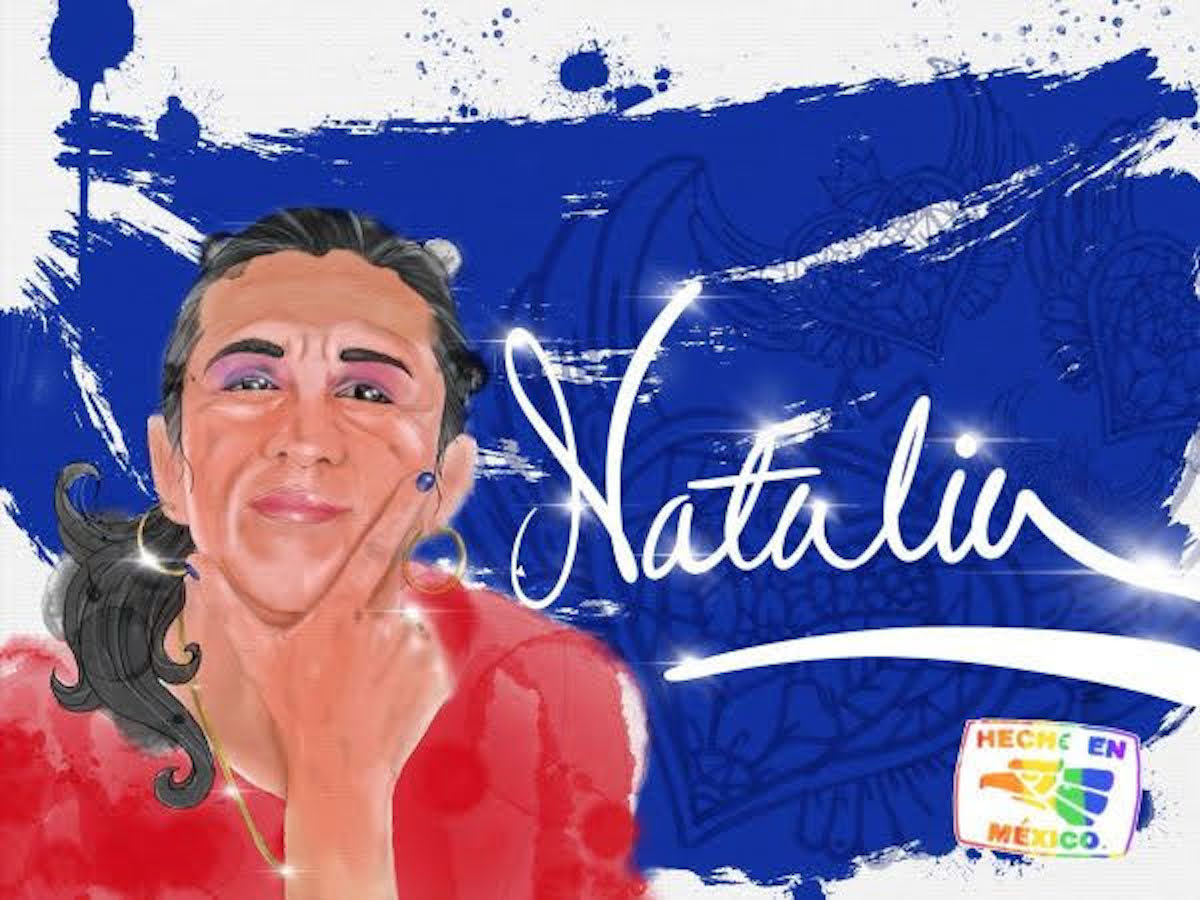Interviewed by Robyn Ochs
Robyn Ochs: Natalia, please tell us about yourself.
Natalia Anaya: My name is Natalia. I currently identify as a bisexual, pansexual, non-monosexual. and non-binary transperson. Also, I am an atheist, feminist, and transfeminist. I am an activist for all these identities.
I also like to use the labels: bigender, multigender, intergender, and agender person. And I have a friend who perceives me as a postgender person. I do not like to use the label queer for various reasons.
Robyn: You have a lot of identities! I consider myself someone who knows more than most about identities and labels, and you’ve used at least one word that is relatively new to me. So, thank you for this new information. Would you mind saying more about what any of these identities mean to you?
Natalia: Sure! With all these identities I try to express my fluidity as a non-monogender and non-binary person. I’m a person who is questioning the traditional ways of understanding gender, moving myself through the spectrum of gender variations and exploring my identity possibilities. For me, the meanings of these identities are: bigender: two genders, multigender: many genders, intergender: between genders, and agender: without gender. I conceive of all these identities as beyond monogender binarism.
Robyn: What would you like us to know about your personal life?
Natalia: I’ve been in a loving relationship for more than 20 years with my partner who is a cisgender woman. I am also a mother of a 29-year-old son and a 25-year-old daughter. I was born and raised in Mexico City in a liberal Catholic family in which I could choose my religion, and I chose to be an atheist. A few years ago, I discovered that the word heresy (herejía) means choice and heretic (hereje) means chooser or elector, both in ancient Greek. Then and there I understood many things. Therefore, I am a proudly heretic woman in the original meaning of the word: I want and I like to choose my life and labels.
I’ve worked for the National Institute of Statistics and Geography since 1985 in different positions in three different cities: Puebla, Aguascalientes, and Mexico City. I’ve been living in Mexico City since 1995.
Robyn: How old were you when you came out?
Natalia: I discovered the word bisexual when I was 37 years old, after living until that point in a state of confusion because the world only gave me two options—homo or straight—and I never felt comfortable with those labels. I discovered the word bisexual when I was attending a workshop about AIDS and sexuality and a girl said she was bisexual. In that moment, I heard a bell in my mind and I realized that the label bisexual fit me.
Some years later, I came out as a trans person. Since I was a child, I knew the world was very different for me. I felt attraction to others regardless of their gender, and I never felt like a girl or a boy. So I think both my bisexuality and my non-binary gender identity are non-binary ways to live. Also, my body after the hormone replacement treatment and my androgynous gender expression that I sometimes have are non-binary, as well.
Today, I am exploring new labels and identities that fit better with my feelings and experiences. For example, the labels bigender, multigender, intergender, and agender offer me a wide possibilities to live my gender identity and enjoy different perspectives to question and deconstruct gender as a binary and static entity. Also, the labels pansexual and non-monosexual enrich and complement the label bisexual to express the orientation of my erotic and loving desires.
Robyn: I like to say that identity is a journey. As we move through our lives we learn more about ourselves, and what we learn may affect how we understand ourselves and how we choose to identify. Do you envision a time when you have it all figured out?
Natalia: I think identity is a journey too. But it is not just movement through my life that lets me know more about myself. I think identities, labels, and the language linked to sexual and gender diversities change over time. Language is the tool that lets us build ourselves and our interactions with otherness. Besides, I enjoy exploring myself continuously so I cannot envision a time prior to my death when I will have it all figured out. And I’m so happy for that.
Robyn: That is such an important point! Our individual journeys take place in the context of an external culture that is also changing and evolving. And I agree: for me it’s about enjoying the journey.
You’ve been a bi activist for a long time, so I’m hoping you know the answer to this next question: What is the history of bi activism in your country? Are there now or have there been groups in other parts of the country, or has all of the organizing to date been in Mexico City?
Natalia: The history of bi activism is very short in my country. The first bisexual group was Taller de Reflexión de Mujeres Bisexuales (Tremub-1996), which was founded by Angélica Ramirez. After that group, we founded Caracol Red Mixta Bisexual (1998). The members of that group asked to change the name of the group, and it became Sentido Bisexual or Sentido Bi (1999). This group continued until 2001 but stopped their activities because during that time my ex-wife didn’t let me see my children, and I was devastated. Two years later, I was able to spend time with my children again, and I founded Opción Bisexual (2003). Our way to get new people involved was visiting lesbian and gay groups to talk about bisexuality and, at the end of the presentations some of the girls and boys of those groups came out as bisexuals, and attended our groups.
In the late 1990s and early 2000s it was very hard to come out as bisexual and even to be bisexual. The Mexican culture related to diversity was more binarist than today. But due to the efforts of our group of activists, bisexuality has become more visible and accepted, even in the lesbian and gay communities. Today, more and more people are coming out as bisexual, homoflexible, pansexual, or plurisexual. Frequently, the meanings of these labels are different for each person. But nowadays there are more and more young people who say aloud that they are bisexual, most of them women.
This past September 23rd, on Celebrate Bisexuality Day, I noticed there are now more lesbian groups that have become bi-inclusive, and some of them have changed their names to include bisexual women. I think the bisexual community has achieved a better integration into the LGBT+ community and the feminist movement over the years.
Today, I’m not in a group, but I do activism on my own in the new groups of young trans and lesbian people.
Robyn: What has been your experience working across national borders? Is there a value in these interactions? I’m very interested in how we cross-pollinate ideas.
Natalia: I’ve read about bisexuality in blogs, books, and magazines in English. Also, I’ve had many interactions with people in Latin America and Spain, but I haven’t discovered anything new about bisexuality. For me, the more interesting and nutritious information is about intersectional and decolonial feminisms from the global south and Black feminisms. Now I have a more complete perspective about sexuality as a part of a larger set of violences that comes from the global north culture, like racism and classism, scientism, cartesianism, binarism, and, of course, coloniality.
Robyn: What else would you like us to know?
Natalia: When I share testimonies about myself, I always say I have been blessed three times: I am bisexual, I am a trans person, and I live with HIV. Because of these three blessings, I see the world from a very different, interesting, and productive standpoint. I’ve learned a lot from these experiences. From these vulnerable three conditions, I can see the privileges and power of the people who self-identify as “normal and healthy persons,” and I can also see other privileges like whiteness, even white feminism.
Robyn: Natalia, thank you so much for your time.
Robyn Ochs is the editor of Bi Women Quarterly and two anthologies, Getting Bi: Voices of Bisexuals Around the World and RECOGNIZE: The Voices of Bisexual Men.

Natalia Anaya
Featured Image: Portrait of Natalia by Emer Gómez-Flores

